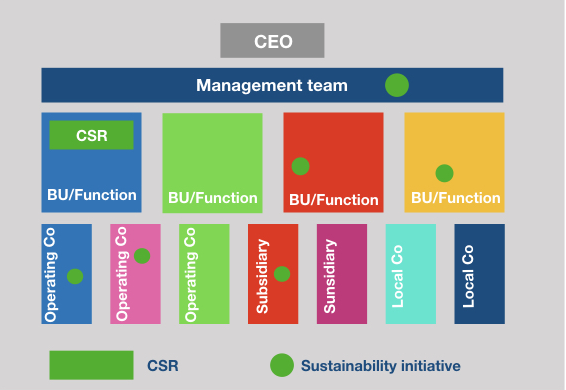Environment: the pressing issue

The governance of sustainability projects is affecting the effectiveness of corporate agenda on the environment. This article explores how it is possible to increase the ability of companies to have a meaningful impact.
Companies – being the coordinated agglomerates they are of human beings that share the common objective to turn profit – are always looking for a “new thing”.
We have observed many different “new things” in the last 20 years: internet and eCommerce as a sales channel, the massive ICT deployment to increase efficiency, y2k, digitalisation, mobile, apps, blockchain, artificial intelligence just to name a few.
The “new thing”, or the “revised new thing” as we ought to call it, having sustainability already been on fashion a few years back, but without the same level of urgency, is now sustainability.
We got to a point as a society where it is clear that if we don’t act now we won’t be in a position to leave to future generations a world that is substantially better and improved than the one we inherited from the previous generations. This promise that has largely held true up to now.
In turn this has impacted deeply emotionally not just at the personal level, but also at a company level. Companies in the end are organisation were individuals cooperate to do something larger than what a n individual can attain on his own, so it is just predictable that is so happens.
Companies response
The environment agenda this year, fuelled by climate anomalies and a young and tough Swedish girl, has vehemently made it again onto the corporate agenda.
Companies are much more responsive to CSR issues, have often times started altogether a dedicated function when they did not have one, or empowered the one they already set up with new responsibilities. At times these functions report directly to the Ceo. In other instances, since they have a reporting responsibility that is closely connected to financial reporting, are inserted into Finance and Accounting. Less frequently they reside inside business divisions or operating companies.
On the other hand – alas and good news at the same time – a lot of managers want to do something good for the environment. The sustainability lens can be applied to almost every aspect of corporate life, from the company employee canteen, to product packaging, employee commutes, suppliers certification: in short close to everything.
It is not uncommon to thus see enlightened line managers take action, in the luckiest cases in coordination with the CSR function, often times alone, and try to “do something”. This makes the governance of sustainability projects very difficult to achieve.
The role of the CSR
This dissemination of activities is also connected with the fact that CSR often have limited or no spending power at all, and their opportunity to be effective rests on the ability to convince other functions to act in coordination with them.
What goes on is the enactment of a sort of a “moral suasion” by CSR on line managers to operate in compliance with a company’s sustainability policy or plan. The same need for coordination often occurs also at a corporate level in those luckiest cases where the CSR reports directly to the Ceo. Even at the C-suite level there is still a lack of visibility on all of company’s actions for efficiency and sustainability, first and foremost because there is a lack of an effective application system able to track all these actions.
Granted: the need to produce NFD and the application of the ISOs relevant to the environment pushes companies to collect vast amounts of information, often in a non systematic or effective way, since the needed information is distributed among different system and spread out across geographies, companies and functions in large and articulated organisations.
A systematic approach
As an effect of this analysis, Ecosostenibile.eu sees a double need in the market, for which it can provide an effective solution.

- The deployment of a sustainability platform able to facilitate this large collection of information, by linking up directly with the operating systems of the company, in order to reduce the effort to recover this information and avoid whenever possible double entries of data.
- A governance of all sustainability process, to be hosted most naturally in the CSR function, or the PMO if available in coordination with the CSR. All the sustainability streams are collected an integrated here, possibly into a plan, in the most enlightened organisations, or following a plan. Governance attributed to an external advisor enjoys the advantage of a credibility that comes from being largely exogenous to company politics.
It’s only by following a systematic approach that companies sustainability efforts can come to fruition and determine the material impact executives expect to see for their company: both on the P&L and on the brand. In addition, an improved governance of sustainability projects can lead to an overall better performance.
In this new and revised approach obviously lies a big opportunity.
The “new thing” will not just be the application of a new business trend to obey some marketing script in order to communicate the some feel-good talking to investors and customers.

The “new thing” – sustainability – becomes a strategic lever to ignite new growth in a traditional business and it becomes the key to see the market under a brand new light. This light that can make companies not just more efficient and thus more competitive but more compliant with stakeholders’ expectations to work towards making this world a better place.
For more business and technology articles, please check the blog
